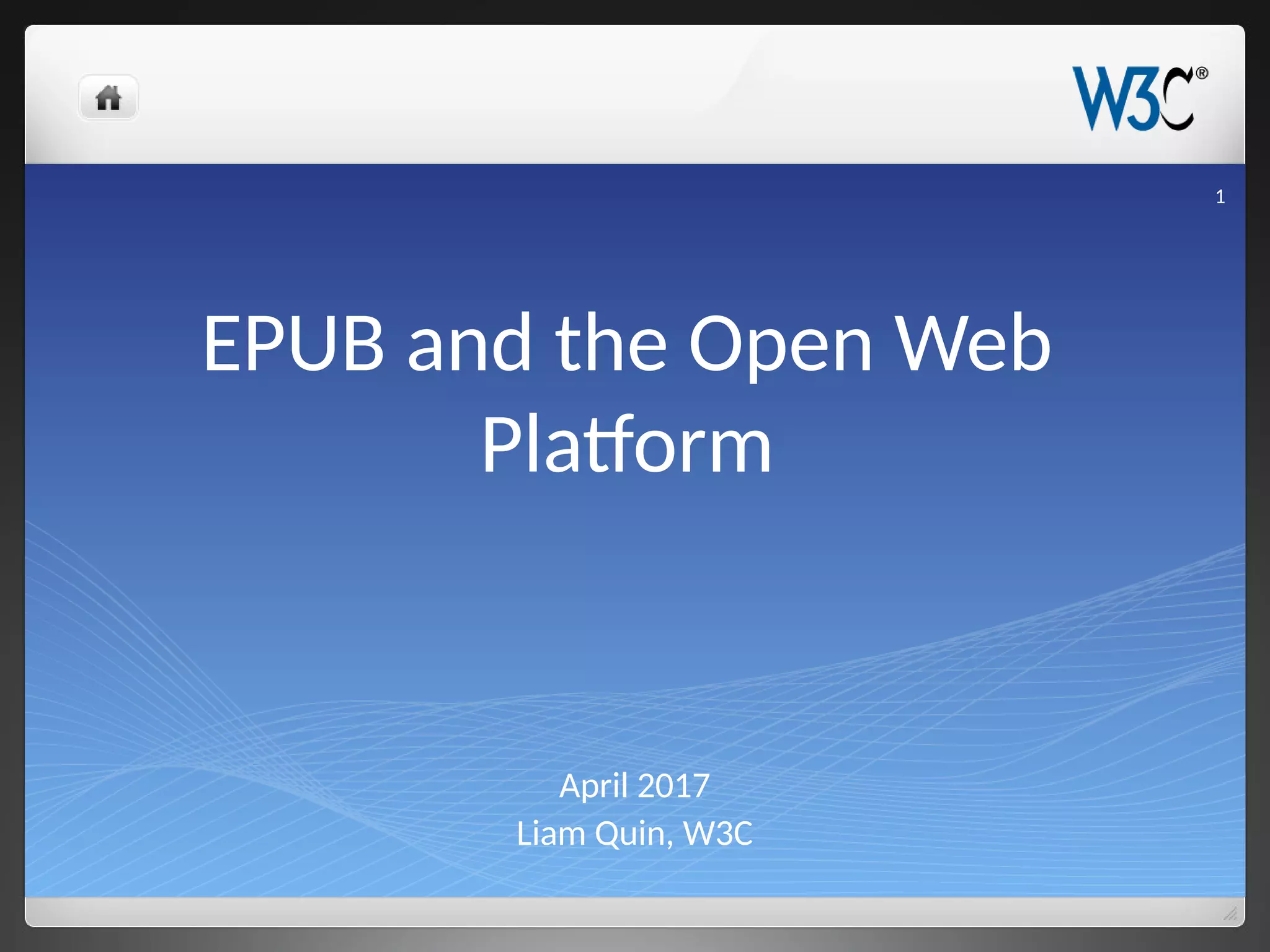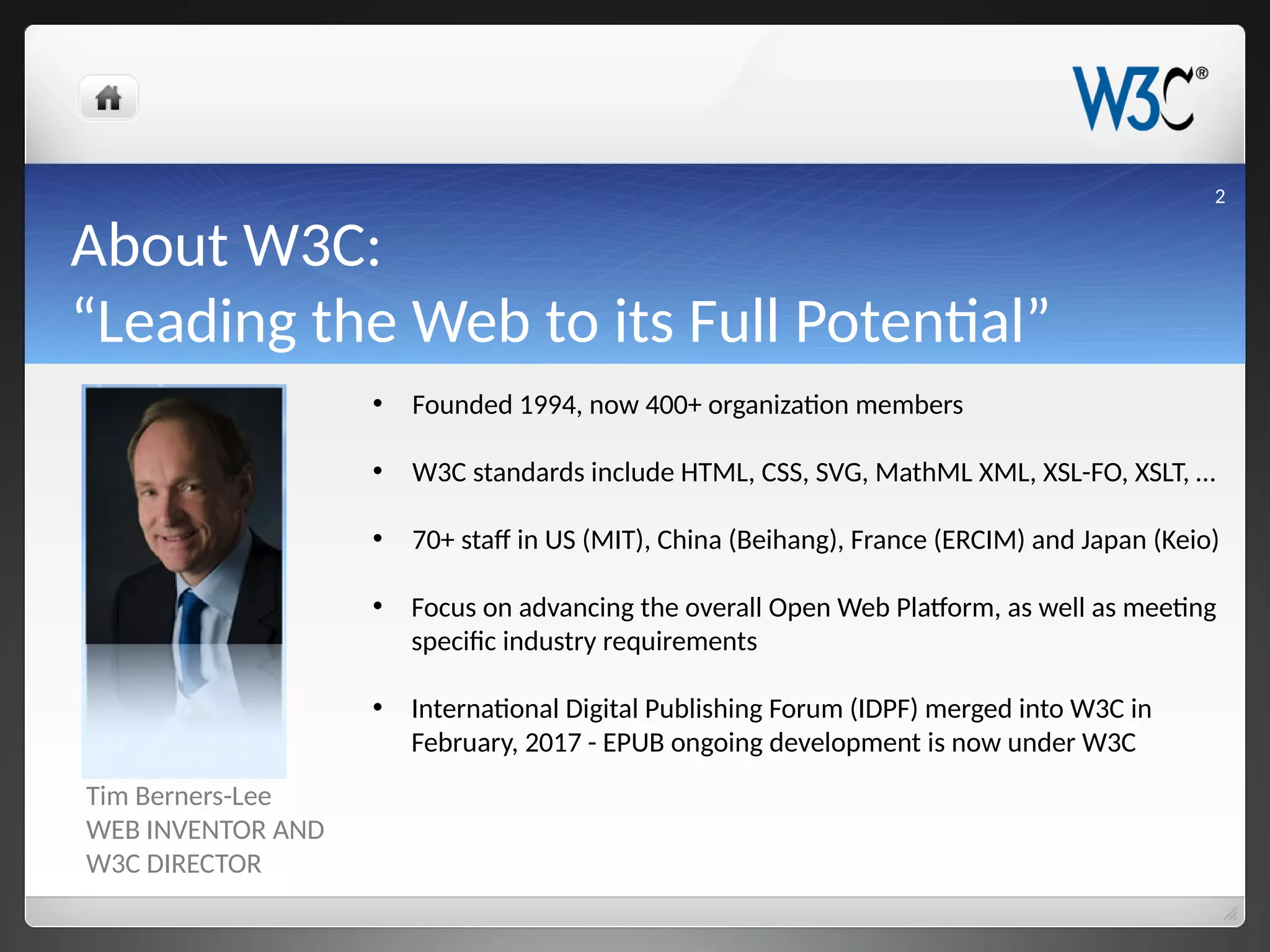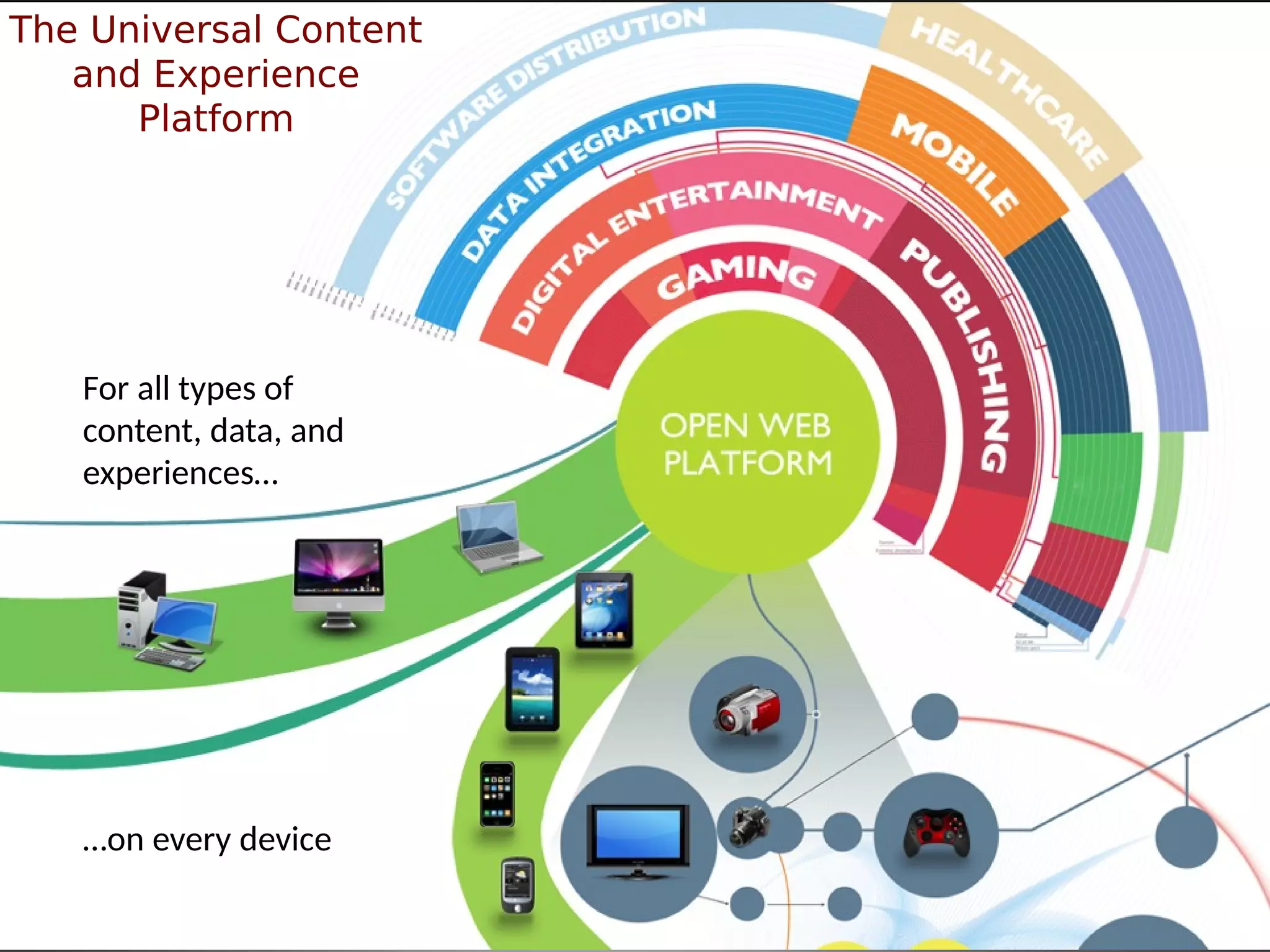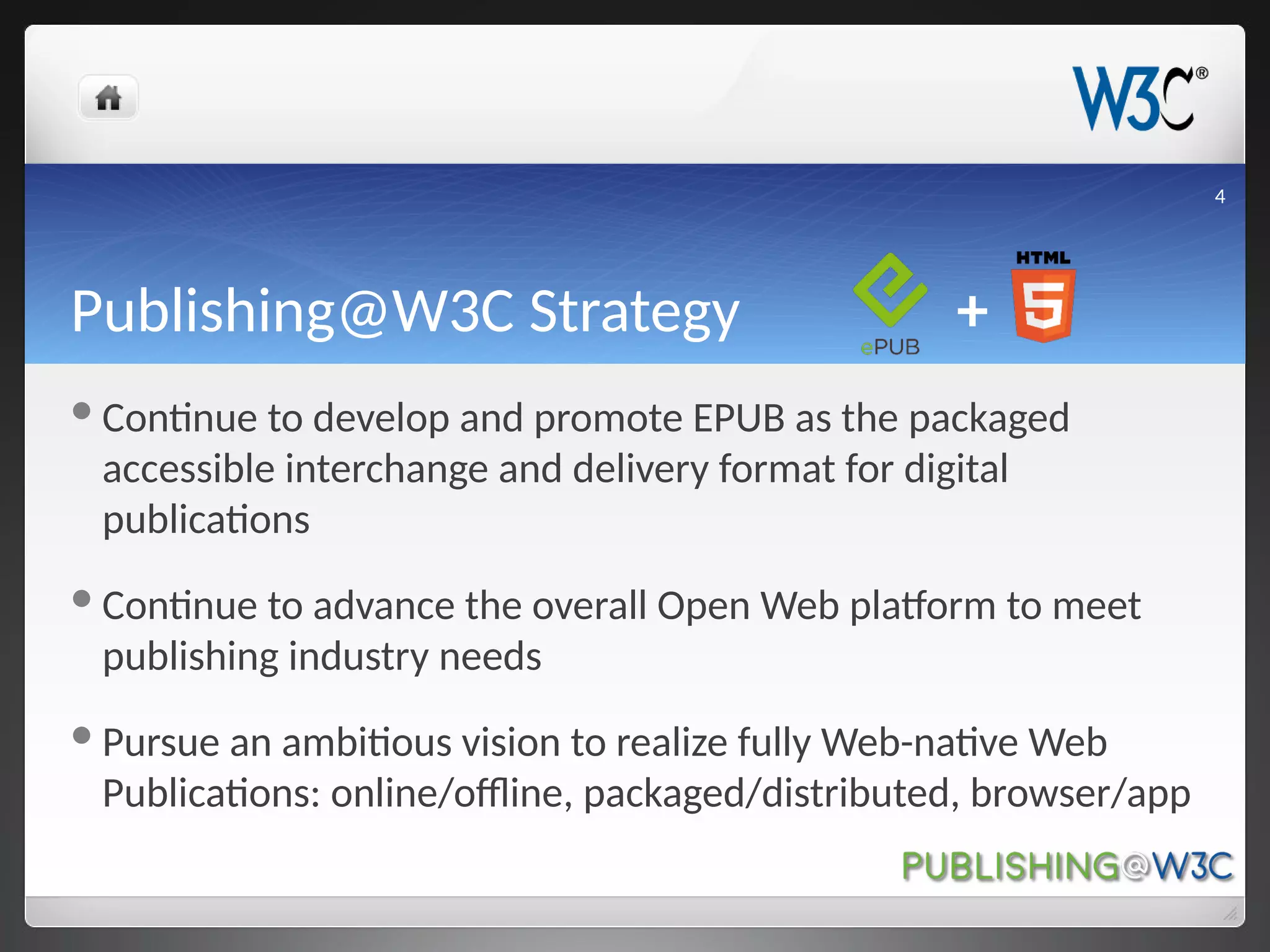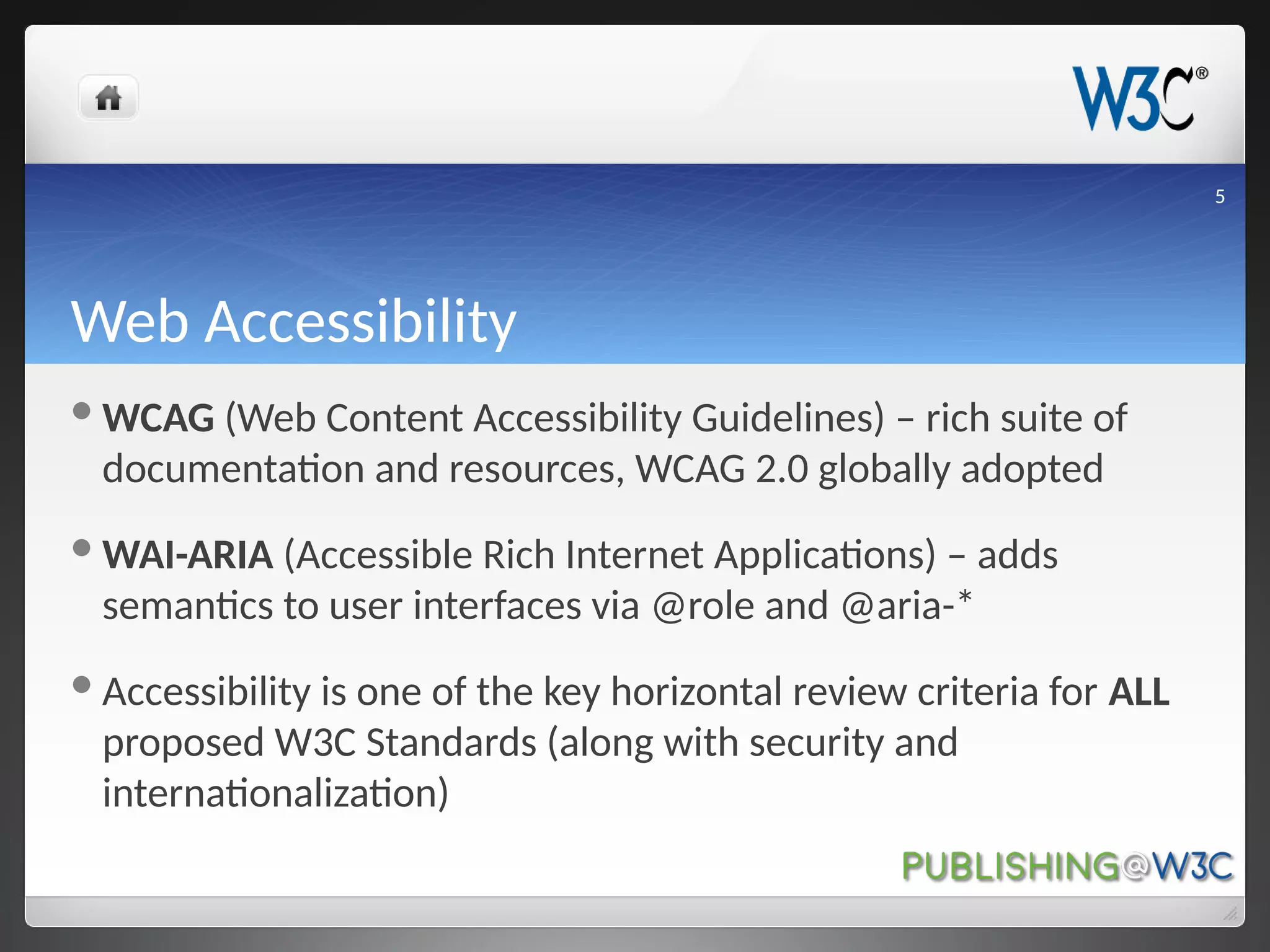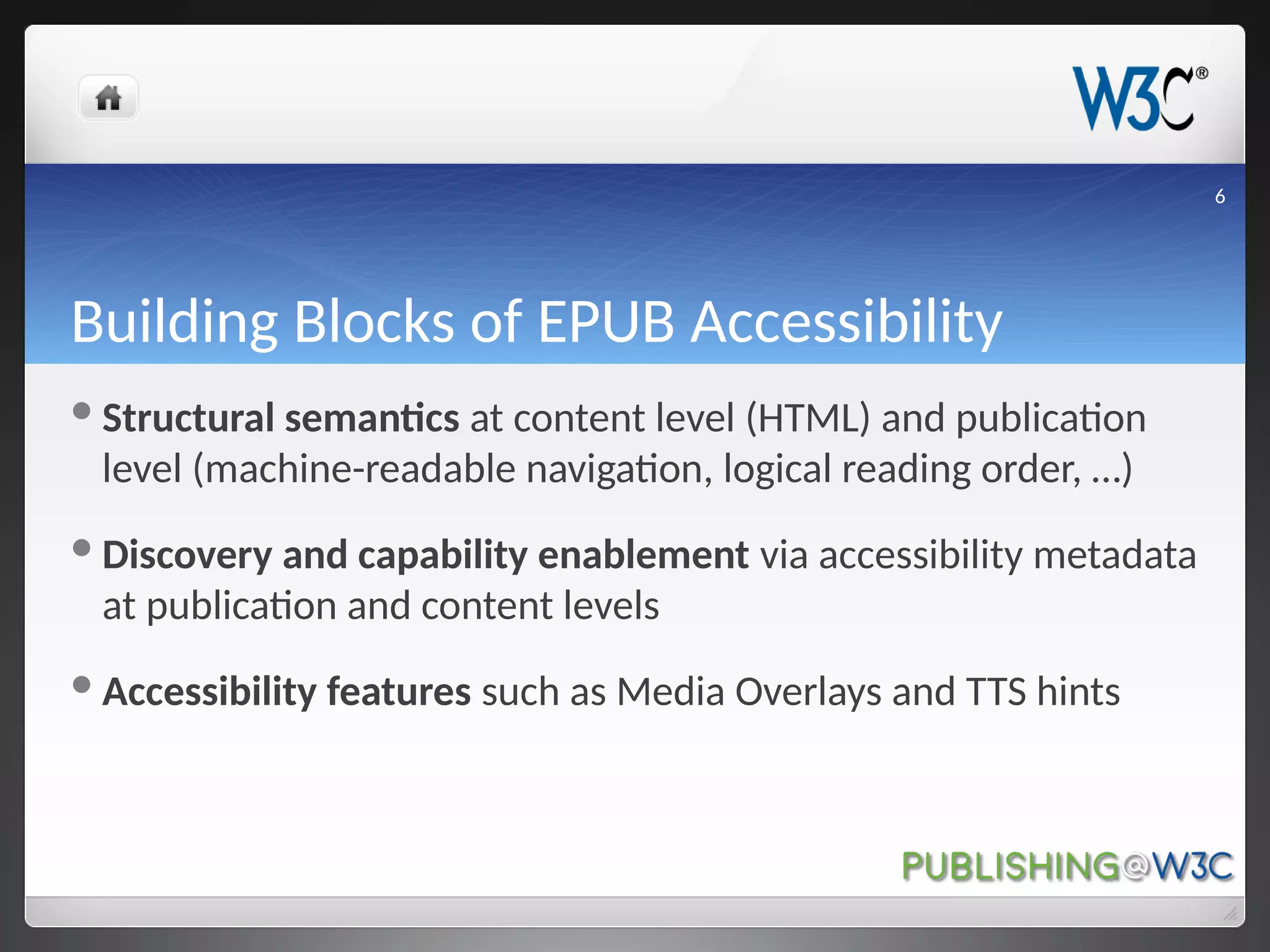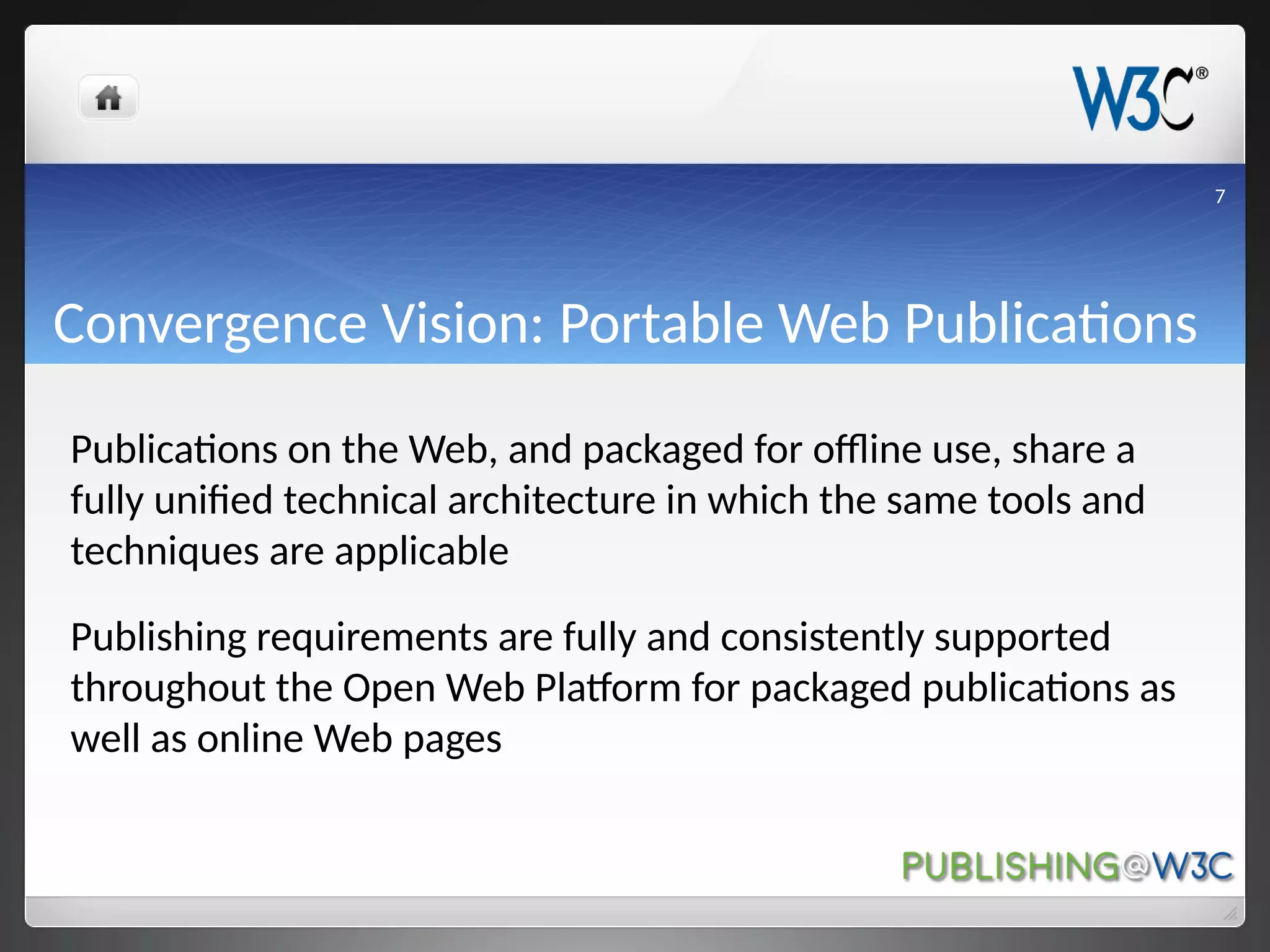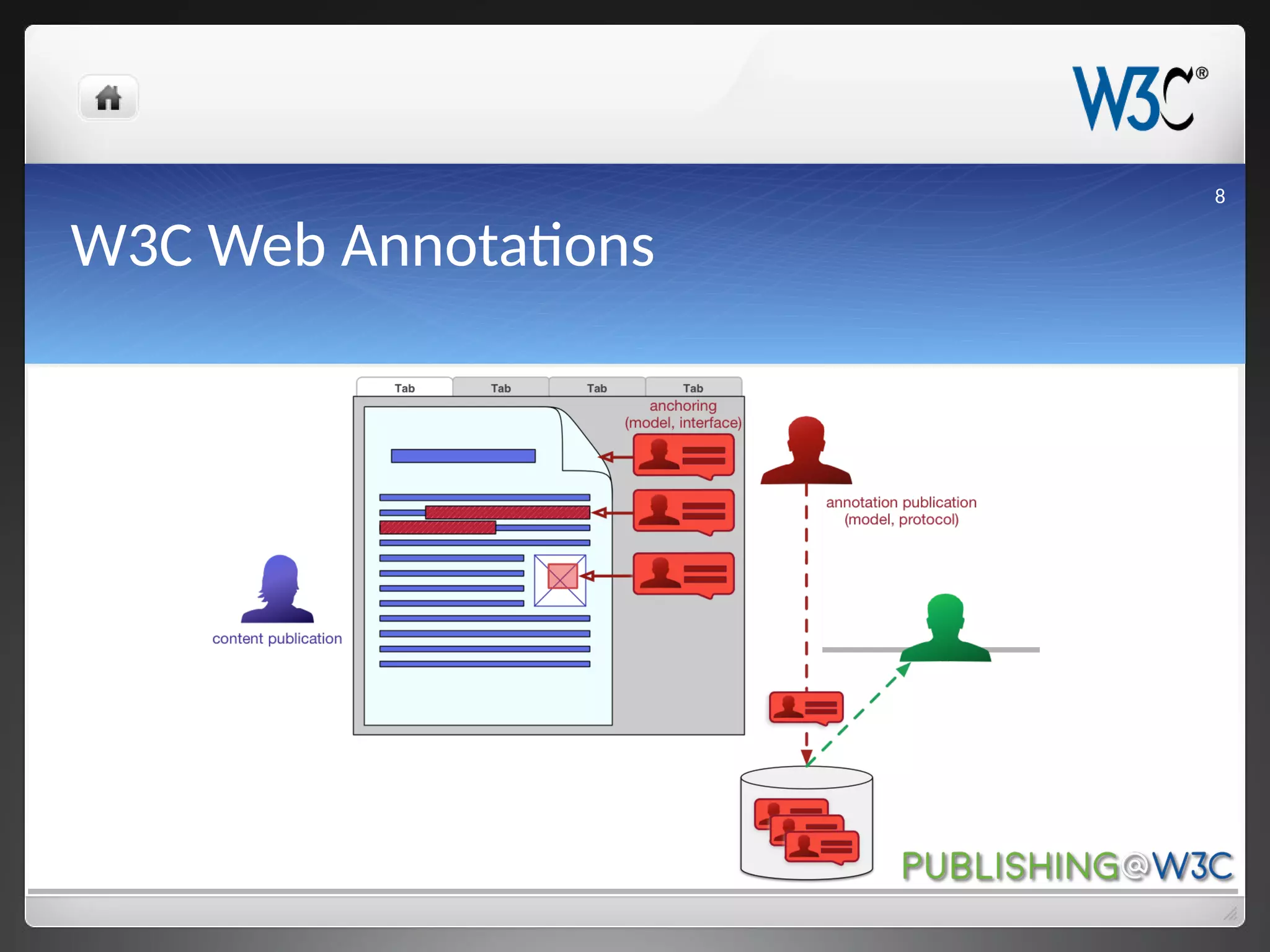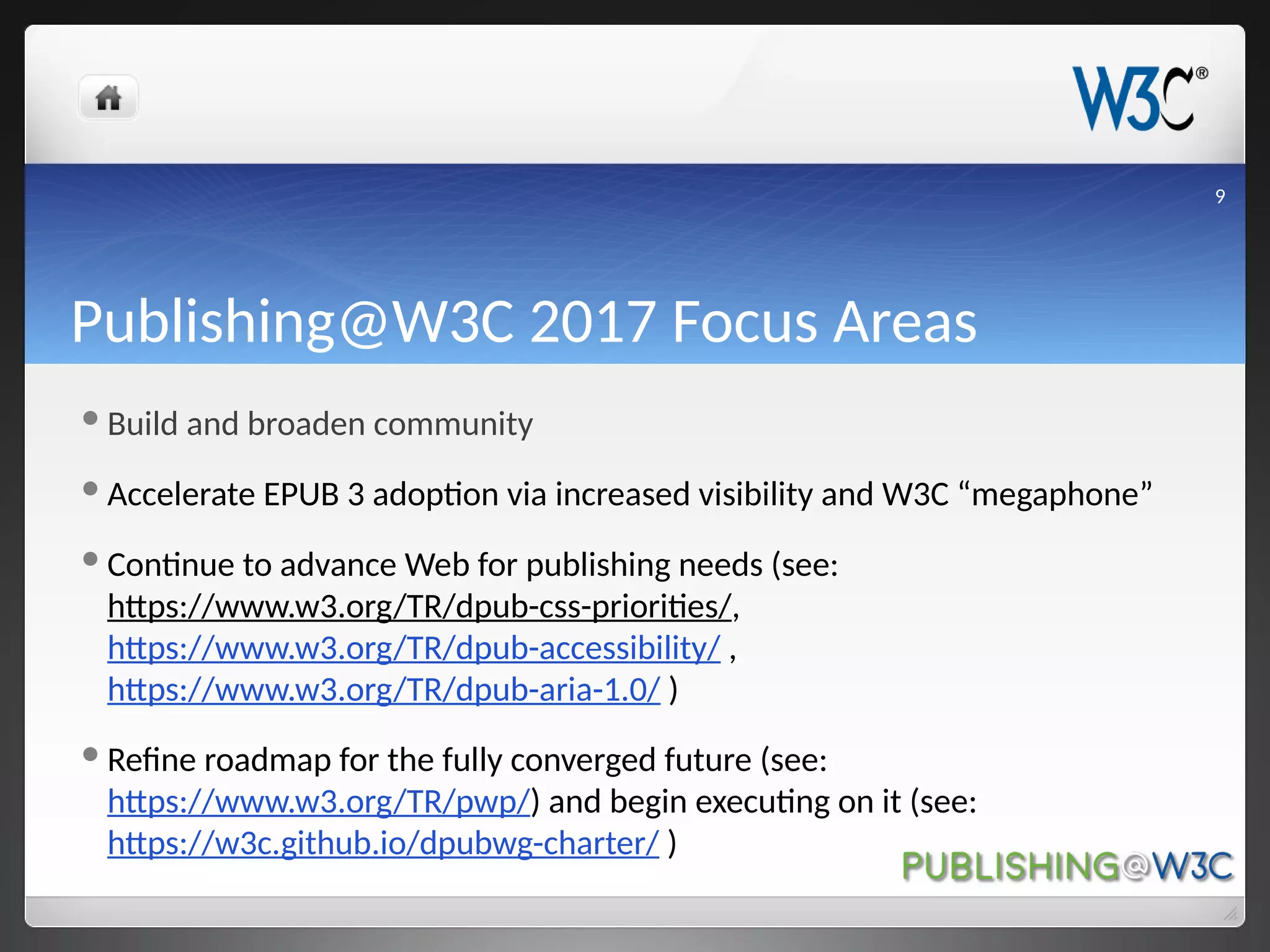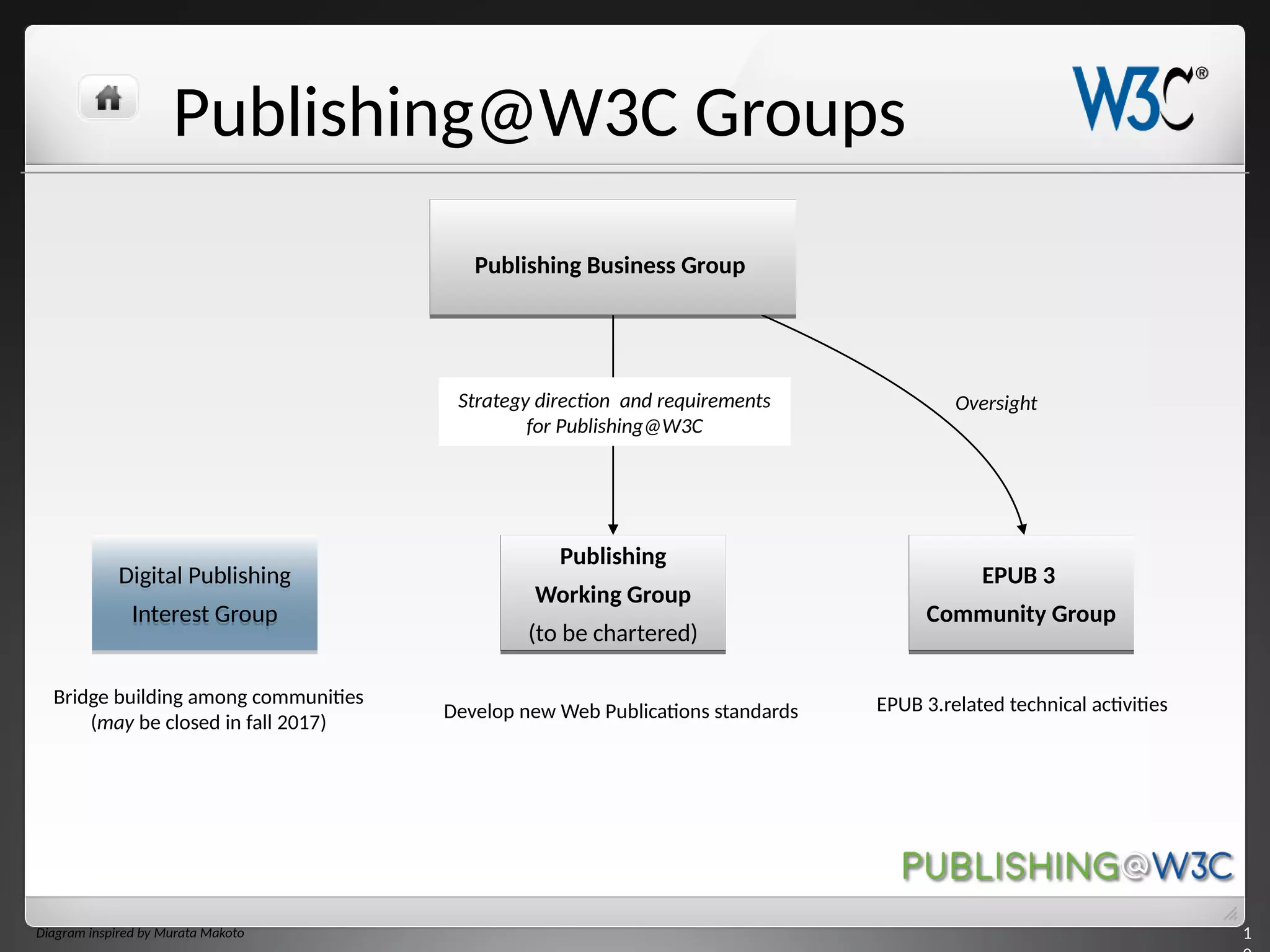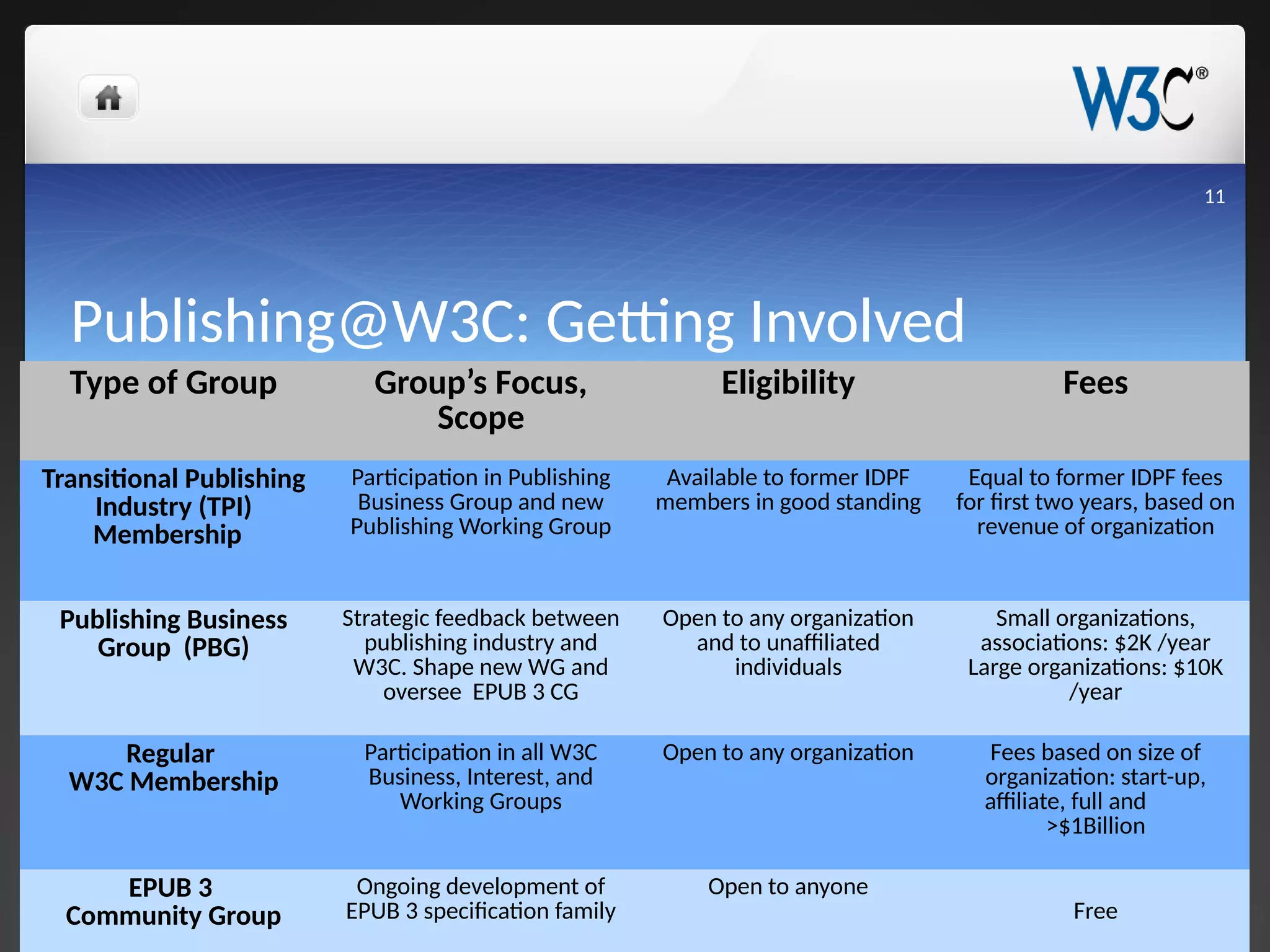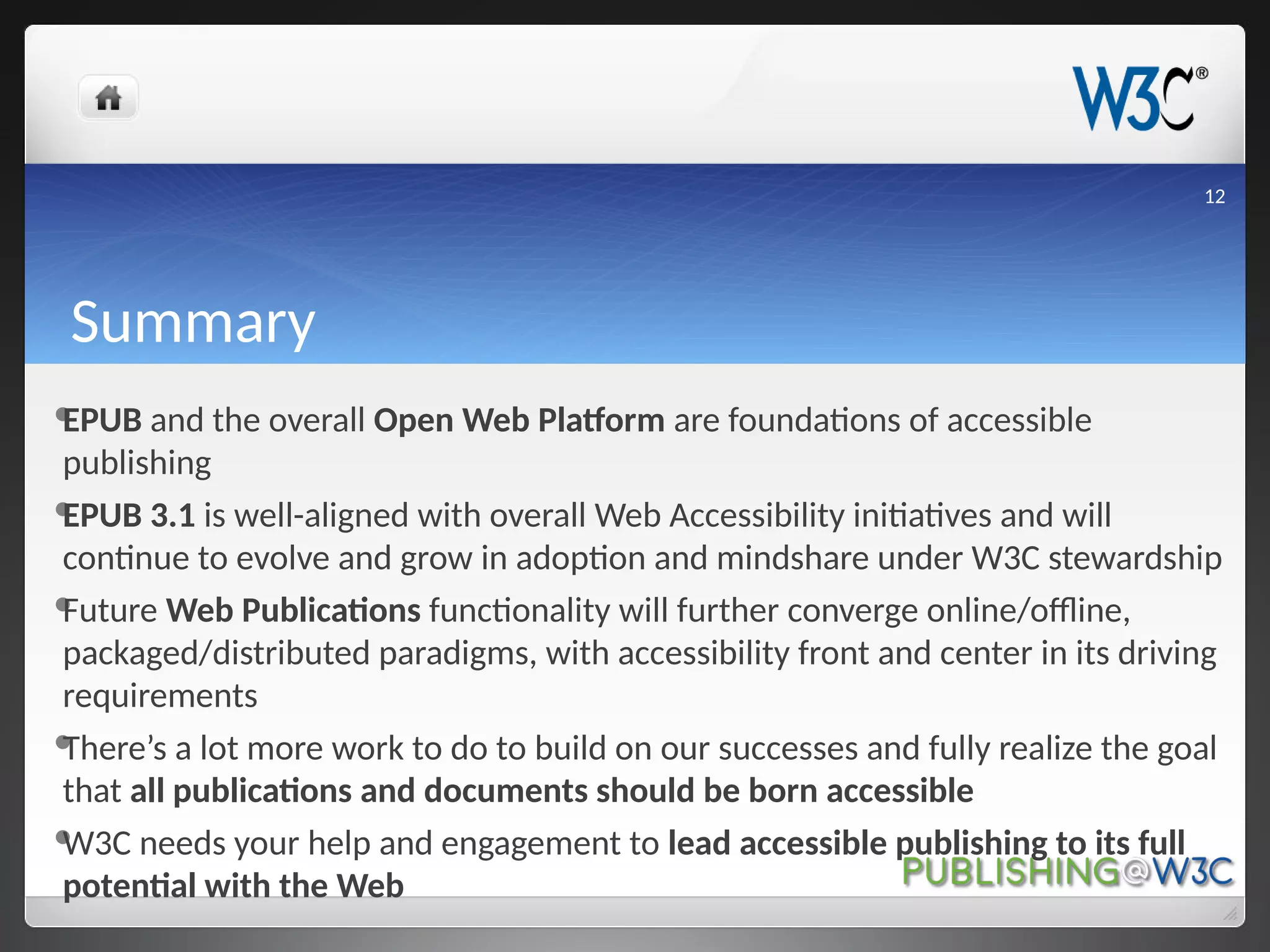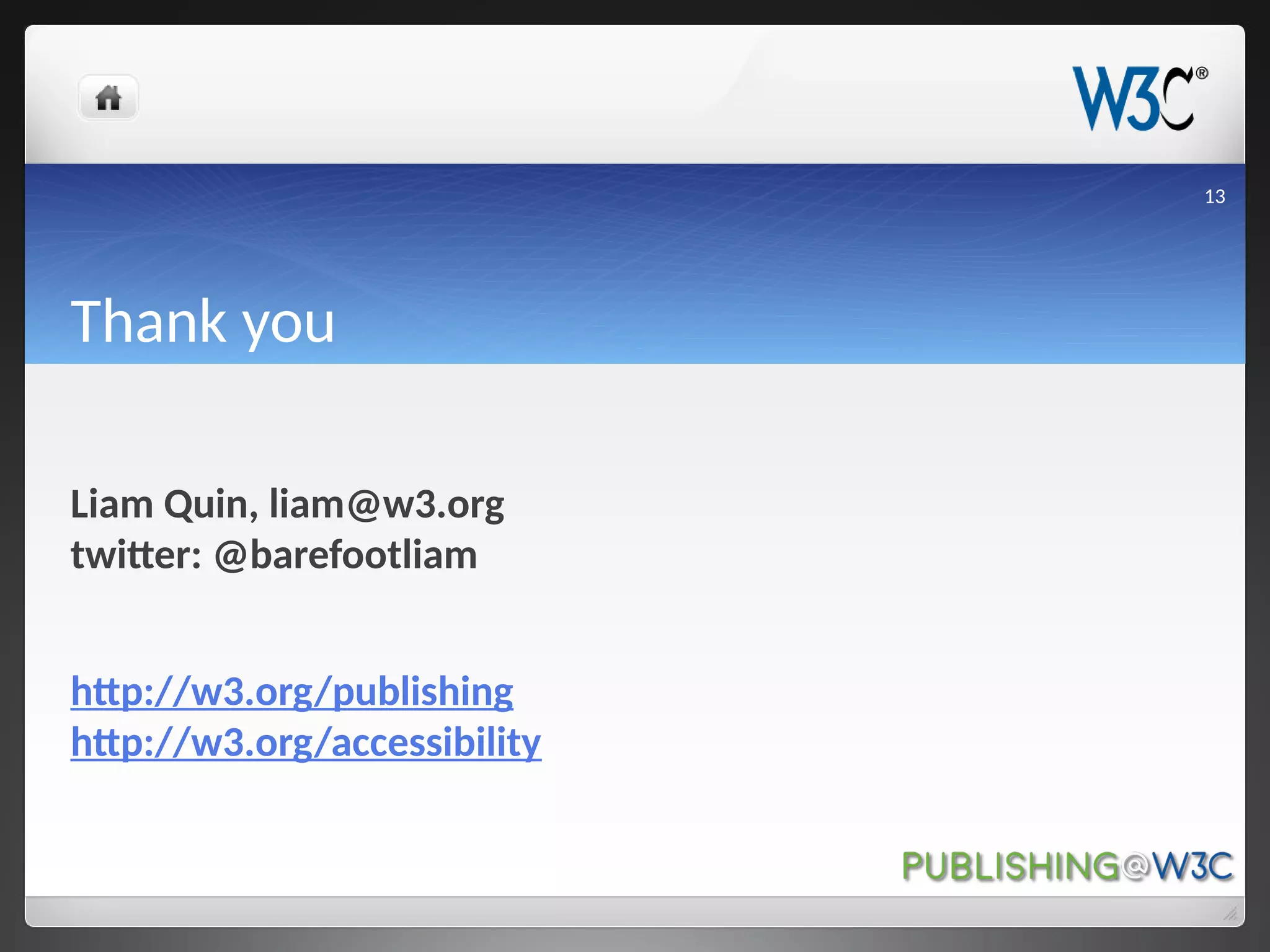The document discusses W3C taking over stewardship of EPUB from IDPF and its vision for the future of accessible digital publishing. It aims to continue developing EPUB, advance the open web platform to meet publishing needs, and realize a vision of fully web-native web publications that can be used both online and offline. W3C is focusing on building communities around these efforts, accelerating EPUB adoption, addressing publishing requirements, and refining a roadmap for converged online and offline publications with a focus on accessibility. The document encourages involvement to help realize the goal of all publications being born accessible.
